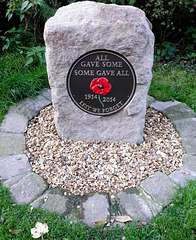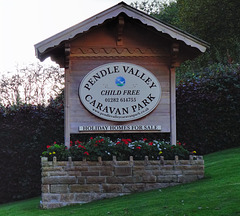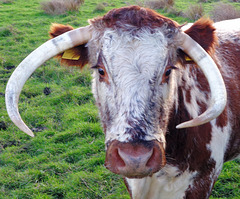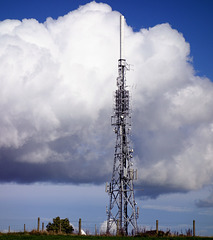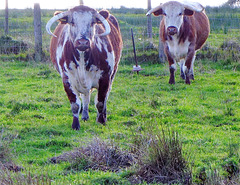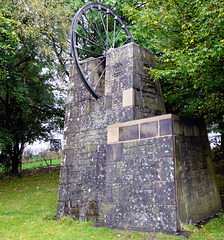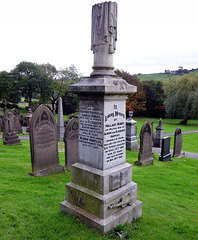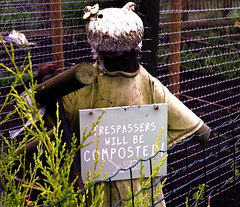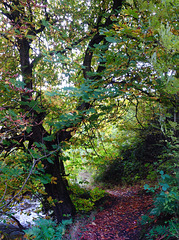
Sony RX100
Union of England & Scotland coin (1 of 2).
| |
|
|
|
The union of English and Scottish thrones.
The Union of England and Scotland Act 1603, (full title...... "An Act authorizing certain Commissioners of the realm of England to treat with Commissioners of Scotland, for the weal [an "olde English" word meaning wealth, health & prosperity] of both kingdoms.") was an Act of Parliament of the Parliament of England enacted during the reign of King James I (who was also King James VI of Scotland). It appointed a commission led by the Lord Chancellor, Lord Ellesmere, to meet and negotiate with a commission which would be appointed by the Parliament of Scotland. The aim of the discussions was to look into the possibility of arranging a formal political union between England and Scotland, going beyond the existing Union of Crowns and to report back to Parliament. The commission was not effective, however, and similar subsequent proposals also fell flat. The two kingdoms were eventually united over a century later by the Acts of Union, 1707.
This Sterling Silver "Trial" coin (A.K.A. "Test" or "Pattern" coin) was minted in 2003 as one of a number of proposed designs for the British version of the Euro. These coins were made in small quantities, often as "Piedforts" (double the thickness & weight of the standard version) and were not intended for circulation. The coins have been created for a variety of reasons, including sample coins for VIPs and for testing various designs and die cuts in the minting equipment.
Photographed with a Sony RX100 camera and processed with Nikon Capture NX2.
Union of England & Scotland coin (2 of 2).
| |
|
|
|
The union of English and Scottish thrones.
The Union of England and Scotland Act 1603, (full title...... "An Act authorizing certain Commissioners of the realm of England to treat with Commissioners of Scotland, for the weal [an "olde English" word meaning wealth, health & prosperity] of both kingdoms.") was an Act of Parliament of the Parliament of England enacted during the reign of King James I (who was also King James VI of Scotland). It appointed a commission led by the Lord Chancellor, Lord Ellesmere, to meet and negotiate with a commission which would be appointed by the Parliament of Scotland. The aim of the discussions was to look into the possibility of arranging a formal political union between England and Scotland, going beyond the existing Union of Crowns and to report back to Parliament. The commission was not effective, however, and similar subsequent proposals also fell flat. The two kingdoms were eventually united over a century later by the Acts of Union, 1707.
This Sterling Silver "Trial" coin (A.K.A. "Test" or "Pattern" coin) was minted in 2003 as one of a number of proposed designs for the British version of the Euro. These coins were made in small quantities, often as "Piedforts" (double the thickness & weight of the standard version) and were not intended for circulation. The coins have been created for a variety of reasons, including sample coins for VIPs and for testing various designs and die cuts in the minting equipment.
Photographed with a Sony RX100 camera and processed with Nikon Capture NX2.
In Memoriam.
| |
|
|
|
A monument photographed near the village of Roughlee in the district of Pendle, North-West England, erected recently to mark the 100th anniversary of the beginning of the First World War. Photographed with a Sony RX100 camera and processed with Nikon Capture NX2.
Witches galore. HFF
| |
|
|
|
A life-size witch model / manikin photographed outside the "Witches Galore" souvenir & gift shop in the village of Newchurch-in-Pendle, Lancashire, in the North-West of England. This village and the surrounding areas were the setting for Britain's most famous (or "infamous") witch trials, The Pendle Witches, in 1612 which resulted in the hanging of ten people at Lancaster. Most of the so-called "evidence" was based on the testimony of a 9-year-old child, Jennet Device, whose mother, brother and grandmother were among the victims. In those days, just to be accused of witchcraft usually meant you were automatically considered guilty unless you could prove (without any legal help) otherwise.
www.witchesgalore.co.uk
Buy one, get one free?
| |
|
|
|
A misleading, funny and probably "politically incorrect" sign seen outside a caravan park (USA=Trailer park) in the village of Roughlee in Pendle district, Lancashire, in the North-West of England.
Photographed with a Sony RX100 camera and processed with Nikon Capture NX2.
Please.....slow.....down.
| |
|
|
|
Photographed near the top of a long steep hill which leads down to the village of Spen Brook in Pendle district, North-West England. The shadows made by the signs, a row of crosses, reminded me of a cemetery......the place where anyone who ignores the warnings may soon be going !!
Photographed with a Sony RX100 camera and processed with Nikon Capture NX2.
Up close and personal.
| |
|
|
|
Photographed between the Pendleside villages of Barley and Roughlee in Lancashire, North-West England. I don't know what breed this cow is (any ideas?).....there were two adults with two young calves in the field and this one followed me along the fence-line, keeping herself between me and the young ones she was protecting. I wanted to get a close-up of the calves but in the end I had to give up....I wasn't going to argue with those horns !!
Update....I've just been informed that these are English Longhorn cattle.
Camera: Sony RX100.
Processed with Nikon Capture NX2.
Sky and steel.
| |
|
|
|
Pendle Forest TV & radio relay mast, situated on the ridge between the villages of Fence and Spen Brook in Lancashire, North-West England. This is a part of the Winter Hill (near Bolton, about 15 miles South of here) group of transmitters and acts as a relay for the towns and villages around the Pendle area.
Photographed with a Sony RX100 camera and processed with Nikon Capture NX2 software.
English Longhorn cattle.
| |
|
|
|
English Longhorn cattle are a long-horned brown and white breed of beef cattle originating from the Craven area in the North-West of England. The breed was initially used as a draught animal which its body is well suited for; the milk was also collected for butter and cheese because of its high butterfat content. An individual farmer would have owned one or two cows; these would have been accompanied by a bull owned by the Lord of the Manor. The long, curved horns that serve to distinguish this breed from others can make an individual appear aggressive, although by temperament they are usually friendly. Longhorns live surprisingly longer than other breeds of cattle and are also known for calving with ease. They have a white patch along the line of their spine and under their bellies. They are not to be confused with the Texas longhorn breed which is also often called "Longhorn cattle" or "Longhorns".
Though long-horned oxen were already predominant in Craven in the 16th and 17th centuries, the English Longhorn breed was much improved for beef by Robert Bakewell of Dishley when large amounts of meat were needed to feed people who had moved to towns and cities in the Industrial Revolution. His selective breeding made the "Dishley Longhorn" very popular towards the end of the 18th century. The breed is still to be found in Leicestershire at the Stanley's Springbarrow Farm, Freddie de Lisle's Quenby Hall and a small herd has been re-introduced at Calke Abbey in Derbyshire where the Harpur-Crewe family had traditionally kept them.
(Wikipedia).
Coal-mining monument.
| |
|
|
|
A monument / memorial to the coal-mining industry which was once widespread in this area. Photographed in Thompson Park, Burnley, in the North-West of England.
The Lancashire Coalfield in North West England was one of the most important British coalfields. It's seams were formed from the vegetation of tropical swampy forests in the Carboniferous period over 300 million years ago. The Romans may have been the first to use coal in Lancashire and it's shallow seams and outcrops were exploited on a small scale from the Middle Ages and extensively after the start of the Industrial Revolution. The coalfield was at the forefront of innovation in coal mining prompting the country's first canals, the use of steam engines and creating conditions favourable for rapid industrialisation. The pits on the coalfield were at their most productive in 1907 when more than 26 million tons of coal were produced. By 1967 just 21 collieries remained. Parkside Colliery in Newton-le-Willows, the last deep mine to be sunk on the coalfield, was closed in 1993.
(Wikipedia).
Camera: Sony RX100
Processed with Nikon Capture NX2.
English Longhorn.
| |
|
|
|
English Longhorn cattle are a long-horned brown and white breed of beef cattle originating from the Craven area in the North-West of England. The breed was initially used as a draught animal which its body is well suited for; the milk was also collected for butter and cheese because of its high butterfat content. An individual farmer would have owned one or two cows; these would have been accompanied by a bull owned by the Lord of the Manor. The long, curved horns that serve to distinguish this breed from others can make an individual appear aggressive, although by temperament they are usually friendly. Longhorns live surprisingly longer than other breeds of cattle and are also known for calving with ease. They have a white patch along the line of their spine and under their bellies. They are not to be confused with the Texas longhorn breed which is also often called "Longhorn cattle" or "Longhorns".
Though long-horned oxen were already predominant in Craven in the 16th and 17th centuries, the English Longhorn breed was much improved for beef by Robert Bakewell of Dishley when large amounts of meat were needed to feed people who had moved to towns and cities in the Industrial Revolution. His selective breeding made the "Dishley Longhorn" very popular towards the end of the 18th century. The breed is still to be found in Leicestershire at the Stanley's Springbarrow Farm, Freddie de Lisle's Quenby Hall and a small herd has been re-introduced at Calke Abbey in Derbyshire where the Harpur-Crewe family had traditionally kept them.
(Wikipedia).
Pendle Hill (HFF).
| |
|
|
|
Pendle Hill in Lancashire, North-West England, viewed from a distance of about 6 miles. In the mid-distance is part of the town of Colne. Photographed with a Sony RX100 camera and processed with Nikon Capture NX2.
Wallace Hartley's grave (2 of 2).
| |
|
|
|
The grave of Wallace Hartley, the Bandmaster and Lead-Violinist on the RMS Titanic who lost his life in the disaster. He and all of the band members stayed at their post as the ship sank, playing (according to most reports) the hymn "Nearer my God To Thee").
Camera: Sony RX100.
Processed with Nikon Capture NX2.
After the Titanic hit an iceberg and began to sink, Hartley and his fellow band members started playing music to help keep the passengers calm as the crew loaded the lifeboats. Many of the survivors said that he and the band continued to play until the very end. None of the band members survived the sinking. One survivor claimed to have seen Hartley and his band standing on the boat deck near the entrance to the grand staircase, near the base of the second funnel. He went on to say that he saw three of them washed off while the other five held on to the railing on top the Grand Staircase's deckhouse, only to be dragged down with the bow, as Hartley exclaimed, "Gentlemen, I bid you farewell." A newspaper at the time reported "the part played by the orchestra on board the Titanic in her last dreadful moments will rank among the noblest in the annals of heroism at sea."
Hartley's body was recovered by the Mackay–Bennett almost two weeks after the sinking and several press reports confirmed that Wallace was found "fully dressed with his music case strapped to his body". He was transferred to the Arabic and returned to England. Wallace's father, Albion, met the ship at Liverpool and brought his son back to his home town of Colne, Lancashire. The funeral took place on 18th May 1912. One thousand people attended his funeral, while an estimated 30,000 - 40,000 lined the route of his funeral procession. Hartley is buried in the Keighley Road cemetery, Colne, where a 10 feet (3.0 m) high headstone containing a carved violin at its base was erected in his honour.
(Wikipedia).
You have been warned !! HFF
| |
|
|
|
Photographed in a garden in Colne, Lancashire, using a Sony RX100 compact camera. Processed with Nikon Capture NX2.
Autumn leaves.
| |
|
|
|
Autumn in the woods along "Ferndean Way", next to the river ("Colne Water") between the towns of Trawden and Colne in Lancashire, North-West England. Photographed with a Sony RX100 camera and processed with Nikon Capture NX2 software.
"By superstition & ignorance".
| |
|
|
|
A memorial situated near the entrance to Pendle Heritage Centre in Barrowford, Lancashire, in the North-West of England. In 1612 the Pendle Forest area was the setting for Britain's most famous / infamous "Witch trials" when 12 people (2 men and 10 women) were accused of various crimes allegedly committed by the use of "Witchcraft". One of the accused, an elderly woman, died in jail before the trial and one person was found not-guilty. The remaining 10 were all found guilty and hanged. The so-called "evidence" was based almost entirely on the testimony of Jennet Device, a 9-year-old child who was the "One voice for ten" inscribed on the monument. Between the time the accused (including all of Jennet's family) were arrested and the time they were brought to trial, Jennet is believed to have been in the care of Roger Nowell who "coincidentally" happened to be the prosecuting magistrate in the case and who almost certainly "coached" her in the evidence she would give.
MORE INFORMATION HERE:
en.wikipedia.org/wiki/Pendle_witches
www.visitlancashire.com/inspire-me/pendle-witches
Photographed with a Sony RX100 camera and processed with Nikon Capture NX2.
Pendle view.
| |
|
|
|
Photographed near the village of Trawden in Pendle District, North-West England, looking West towards the town of Colne and Pendle Hill. Photographed with a Sony RX100 camera and processed with Nikon Capture NX2 software.
Autumn in the woods.
| |
|
|
|
Photographed near the town of Colne in the district of Pendle, North-West England. Although we're almost in the middle of October, today was one of the hottest days of the year so far and many of the broad-leaf trees are still clothed in leaves.....it was more like mid-Summer than Autumn / Fall. Photographed with a Sony RX100 camera and processed with Nikon Capture NX2.
Jump to top
RSS feed- Latest items - Subscribe to the latest items added to this album
- ipernity © 2007-2025
- Help & Contact
|
Club news
|
About ipernity
|
History |
ipernity Club & Prices |
Guide of good conduct
Donate | Group guidelines | Privacy policy | Terms of use | Statutes | In memoria -
Facebook
Twitter



